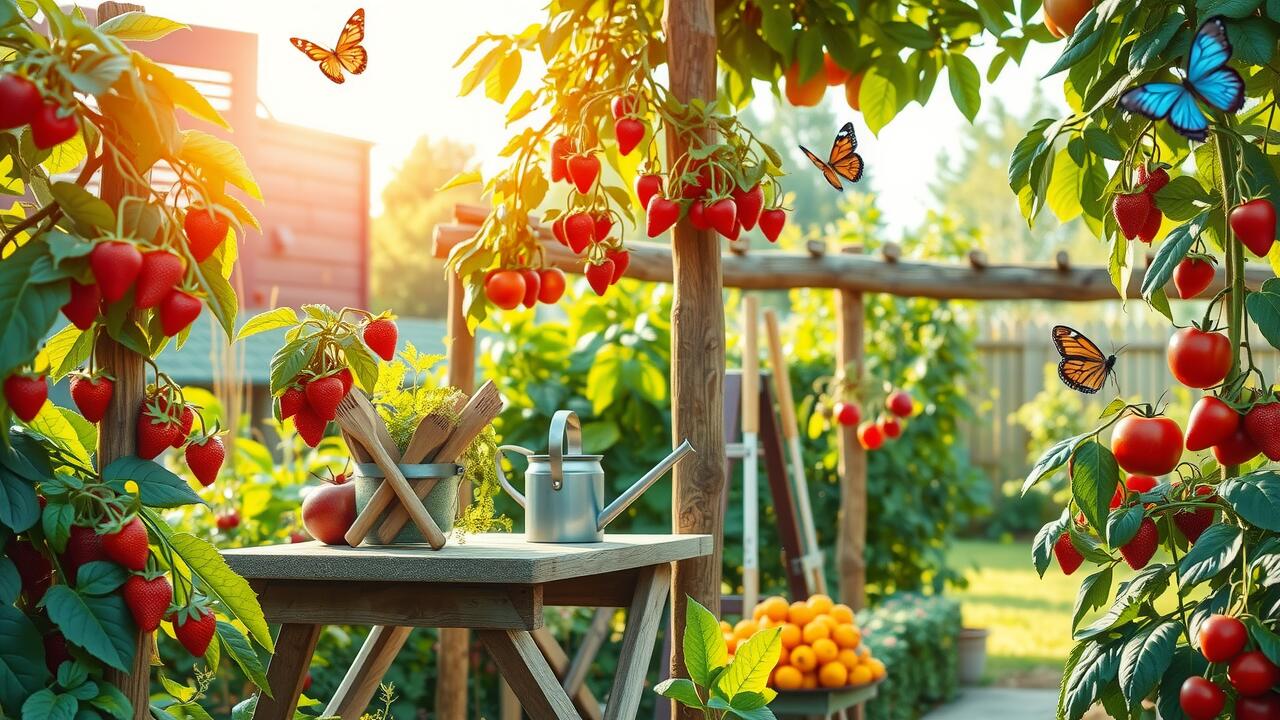Cultivating Blueberries
Blueberries thrive in well-draining, acidic soil, ideally with a pH between 4.5 and 5.5. Conducting a soil test can help determine the current pH and nutrient levels, allowing for necessary amendments. Incorporating organic matter, such as peat moss or compost, can enhance soil quality. These plants prefer full sun, so choose a location that receives at least six hours of direct sunlight each day for optimal fruit production.
Regular watering is crucial, especially during dry spells, as blueberries have shallow roots that may dry out quickly. Mulching around the plants retains moisture and suppresses weeds, creating a healthier growing environment. Pruning is essential for maintaining bush shape and removing any dead or diseased branches. This encourages air circulation and sunlight penetration, leading to improved fruit yields.
Soil pH and Sunlight Needs
Blueberries thrive in acidic soil with a pH level between 4.5 and 5.5. Testing the soil before planting is essential to ensure it meets these requirements. If the pH is higher, amendments like sulfur or organic matter can help lower it. Providing adequate acidity creates the optimal environment for the roots to absorb nutrients effectively.
Sunlight is another crucial factor for blueberry cultivation. These plants require full sun exposure, ideally receiving six to eight hours of direct sunlight each day. Insufficient light can lead to poor fruit production and weak plants. Choosing a site with the right sun exposure will significantly enhance growth and yield, making it easier to enjoy a bountiful harvest.
Pear Trees
Planting pear trees in your backyard offers a delightful way to enjoy home-grown fruit. These trees thrive in well-drained soil with plenty of sunlight. They are moderately hardy and adapt well to various climates, making them a suitable choice for many gardeners. When selecting a variety, consider the local climate and chill hour requirements, which can influence fruit production.
Caring for pear trees is a manageable task. Regular watering, especially during dry spells, helps support their growth. Proper pruning in the winter months encourages healthy air circulation and fruit development. Additionally, monitoring for pests and diseases will protect the tree and ensure a bountiful harvest. With a little attention, a pear tree can flourish and reward you with sweet, juicy fruit.
Care and Maintenance for Pear Trees
Ensuring the health of pear trees requires regular attention to watering and fertilization. Watering should be done deeply, especially during dry spells. Established trees typically need less frequent watering, while young trees benefit from consistent moisture. Fertilizing in the spring with a balanced fertilizer can help boost growth and fruit production, but over-fertilization should be avoided to prevent excessive leaf development at the expense of fruit.
Pruning is another vital aspect of maintaining pear trees. This should be done during the dormant season to remove any dead or overcrowded branches. Proper pruning helps improve airflow and sunlight penetration, both essential for healthy growth and fruit yield. Monitoring for pests and diseases throughout the growing season is important, as early detection ensures timely intervention and helps maintain tree vitality.
Growing Raspberries Successfully
Raspberries are an enticing option for home gardens due to their flavorful fruits and relatively simple cultivation requirements. Selecting the right variety is crucial, with options available for different climates and growing conditions. Considerations include whether to choose summer-bearing or everbearing types. Summer-bearing varieties produce one large crop, while everbearing ones yield fruit in two separate flush periods. Proper spacing when planting is essential to ensure good airflow and reduce the risk of disease.
To maximize raspberry production, implementing trellising techniques can be highly effective. Installing a sturdy trellis supports the canes, helping to keep the plants upright and improving exposure to sunlight. This method also simplifies maintenance tasks such as pruning and harvesting. Regular watering is needed, especially during the fruiting period, but care should be taken to avoid waterlogging. A balanced fertilizer applied in early spring can provide the necessary nutrients for robust growth and fruit development.
Trellising Techniques for Raspberries
Creating a supportive trellis system is crucial for successful raspberry cultivation. An effective method involves setting up a double-wire trellis, which consists of two parallel wires strung between posts. This system allows the raspberry canes to be trained upward. The elevation keeps the fruit off the ground, promoting better air circulation and reducing the risk of disease.
Regular maintenance of the trellis is necessary to support healthy growth. Pruning the canes each season encourages new growth and optimal fruit production. It is essential to tie the canes gently to the wires, ensuring they are secured without causing damage. With proper techniques, the trellis not only enhances the raspberry plants’ stability but also simplifies the harvesting process.
FAQS
What is the easiest fruit to grow in my backyard?
Some of the easiest fruits to grow in your backyard include blueberries, raspberries, and pear trees, each requiring minimal maintenance and providing delicious results.
Do blueberries require specific soil conditions?
Yes, blueberries thrive in acidic soil with a pH range of 4.5 to 5.5. Ensuring the right soil pH and providing adequate sunlight will help them flourish.
How much sunlight do pear trees need?
Pear trees generally require full sun, which means they should receive at least 6 to 8 hours of direct sunlight each day to ensure healthy growth and fruit production.
What maintenance do raspberry plants need?
Raspberries need regular watering, proper pruning, and support through trellising to grow successfully. Ensuring good air circulation around the plants will also help prevent disease.
Can I grow these fruits in pots?
Yes, many fruits, including blueberries and raspberries, can be successfully grown in pots, making them ideal for small backyards or patio spaces. Just be sure to use appropriate potting soil and provide ample sunlight.
